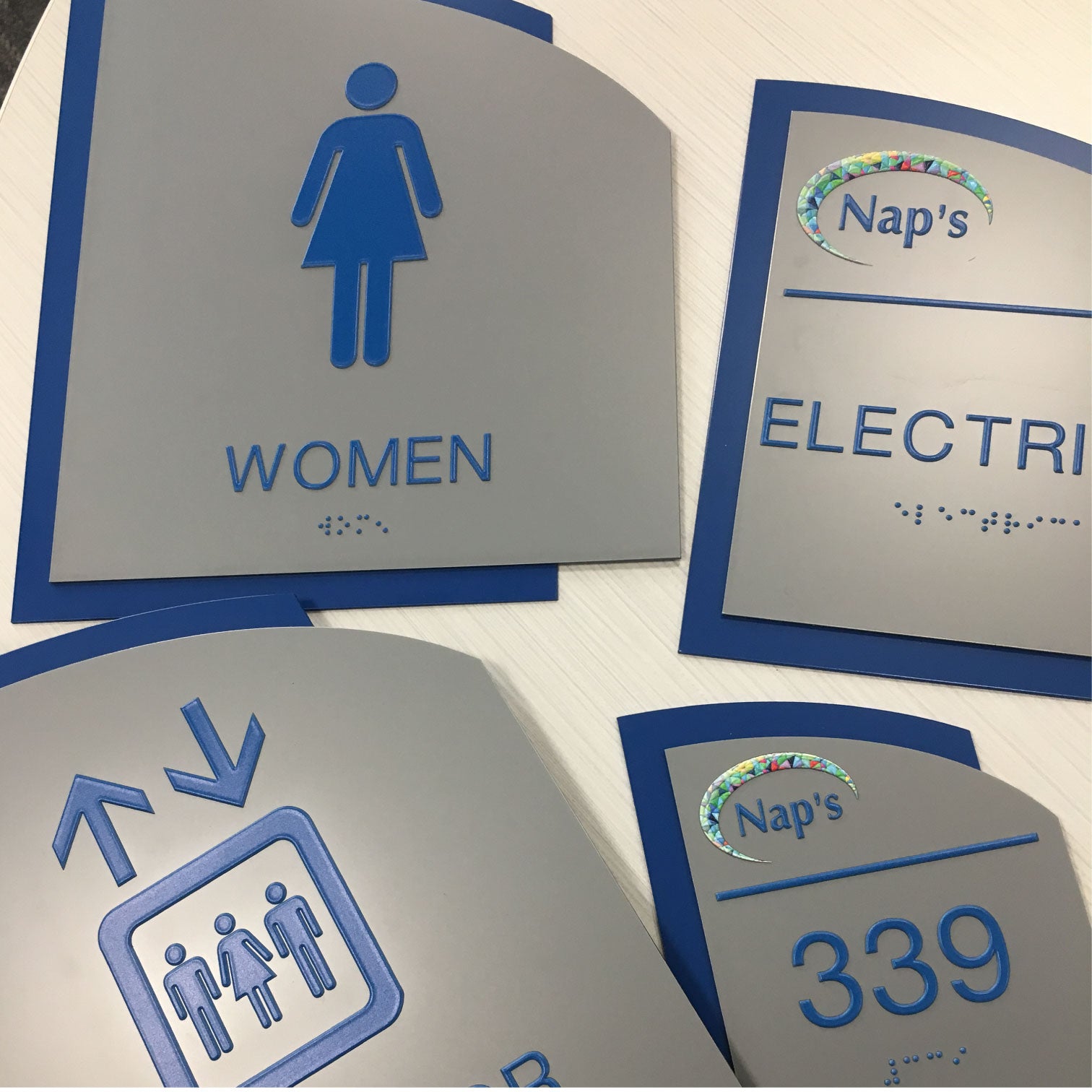The Effect of ADA Signs on Area Ease Of Access
The Effect of ADA Signs on Area Ease Of Access
Blog Article
Discovering the Secret Functions of ADA Signs for Boosted Accessibility
In the realm of accessibility, ADA indicators act as silent yet powerful allies, making certain that rooms are inclusive and navigable for individuals with impairments. By integrating Braille and tactile aspects, these indications damage barriers for the visually impaired, while high-contrast color design and readable font styles satisfy diverse visual demands. Their calculated positioning is not approximate yet instead a computed effort to facilitate seamless navigating. Yet, beyond these features lies a deeper story concerning the development of inclusivity and the ongoing dedication to developing equitable spaces. What more could these indicators indicate in our search of universal availability?
Significance of ADA Compliance
Making certain compliance with the Americans with Disabilities Act (ADA) is crucial for fostering inclusivity and equivalent accessibility in public rooms and workplaces. The ADA, passed in 1990, mandates that all public facilities, companies, and transport solutions accommodate people with specials needs, ensuring they appreciate the very same civil liberties and possibilities as others. Conformity with ADA criteria not only meets legal commitments however likewise enhances an organization's online reputation by showing its commitment to diversity and inclusivity.
One of the vital facets of ADA conformity is the application of available signage. ADA indications are created to guarantee that individuals with handicaps can conveniently browse through buildings and areas.
Furthermore, adhering to ADA guidelines can reduce the risk of legal consequences and potential fines. Organizations that stop working to abide by ADA guidelines might deal with penalties or legal actions, which can be both financially difficult and harmful to their public image. Thus, ADA conformity is essential to promoting an equitable atmosphere for everybody.
Braille and Tactile Elements
The consolidation of Braille and tactile aspects right into ADA signage embodies the principles of availability and inclusivity. These features are essential for people that are blind or visually damaged, allowing them to navigate public spaces with higher freedom and confidence. Braille, a responsive writing system, is vital in offering composed info in a style that can be easily perceived via touch. It is usually positioned under the corresponding text on signs to make sure that individuals can access the info without visual help.
Responsive elements extend beyond Braille and include raised signs and characters. These elements are designed to be noticeable by touch, allowing people to recognize area numbers, restrooms, departures, and other essential locations. The ADA sets details guidelines concerning the dimension, spacing, and positioning of these responsive aspects to maximize readability and make certain uniformity across different environments.

High-Contrast Color Design
High-contrast color design play a crucial role in boosting the presence and readability of ADA signage for people with aesthetic disabilities. These schemes are crucial as they maximize the difference in light reflectance in between text and background, ensuring that signs are quickly discernible, also from a range. The Americans with Disabilities Act (ADA) mandates the usage of details shade contrasts to fit those with restricted vision, making it a vital aspect of compliance.
The efficacy of high-contrast colors depends on their ability to stand out in numerous illumination conditions, consisting of poorly lit settings and areas with glow. Generally, dark text on a light history or light text on a dark background is used to accomplish ideal comparison. Black message on a yellow or white background provides a raw visual distinction that aids in fast acknowledgment and comprehension.

Legible Fonts and Text Size
When considering the style of ADA signage, the selection of legible typefaces and appropriate message dimension can not be overemphasized. These elements are crucial for ensuring that indications are available to people with visual impairments. The Americans with Disabilities reference Act (ADA) mandates that fonts have to be not italic and sans-serif, oblique, script, highly decorative, or of unusual form. These demands assist ensure that the message is quickly readable from a distance and that the characters are distinguishable to varied target markets.
The size of the text likewise plays Home Page a critical function in accessibility. According to ADA guidelines, the minimum message height must be 5/8 inch, and it ought to raise proportionally with watching distance. This is particularly crucial in public rooms where signage needs to be reviewed rapidly and properly. Uniformity in message size adds to a natural visual experience, aiding individuals in navigating atmospheres effectively.
Moreover, spacing in between letters and lines is integral to legibility. Ample spacing protects against characters from showing up crowded, improving readability. By adhering to these requirements, developers can significantly improve ease of access, making sure that signage serves its desired function for all people, despite their visual capabilities.
Efficient Positioning Methods
Strategic positioning of click here now ADA signs is important for taking full advantage of ease of access and guaranteeing compliance with lawful requirements. Effectively positioned signs direct people with disabilities properly, assisting in navigating in public rooms. Key factors to consider include elevation, proximity, and exposure. ADA standards specify that indicators should be installed at an elevation between 48 to 60 inches from the ground to ensure they are within the line of view for both standing and seated people. This standard height variety is crucial for inclusivity, making it possible for mobility device users and individuals of differing heights to access details easily.
In addition, indications need to be put surrounding to the lock side of doors to enable easy recognition prior to access. Consistency in indication positioning throughout a facility improves predictability, minimizing confusion and enhancing general customer experience.

Final Thought
ADA indications play an important duty in advertising ease of access by incorporating functions that resolve the demands of people with handicaps. These elements jointly promote an inclusive atmosphere, highlighting the relevance of ADA compliance in making sure equal access for all.
In the world of accessibility, ADA indicators serve as quiet yet powerful allies, making certain that spaces are accessible and comprehensive for individuals with disabilities. The ADA, enacted in 1990, mandates that all public centers, companies, and transport solutions suit individuals with specials needs, ensuring they delight in the same rights and possibilities as others. ADA Signs. ADA indications are designed to make certain that individuals with impairments can conveniently browse with structures and rooms. ADA guidelines stipulate that indicators ought to be installed at an elevation between 48 to 60 inches from the ground to ensure they are within the line of view for both standing and seated people.ADA signs play a vital duty in promoting accessibility by incorporating attributes that attend to the needs of people with handicaps
Report this page